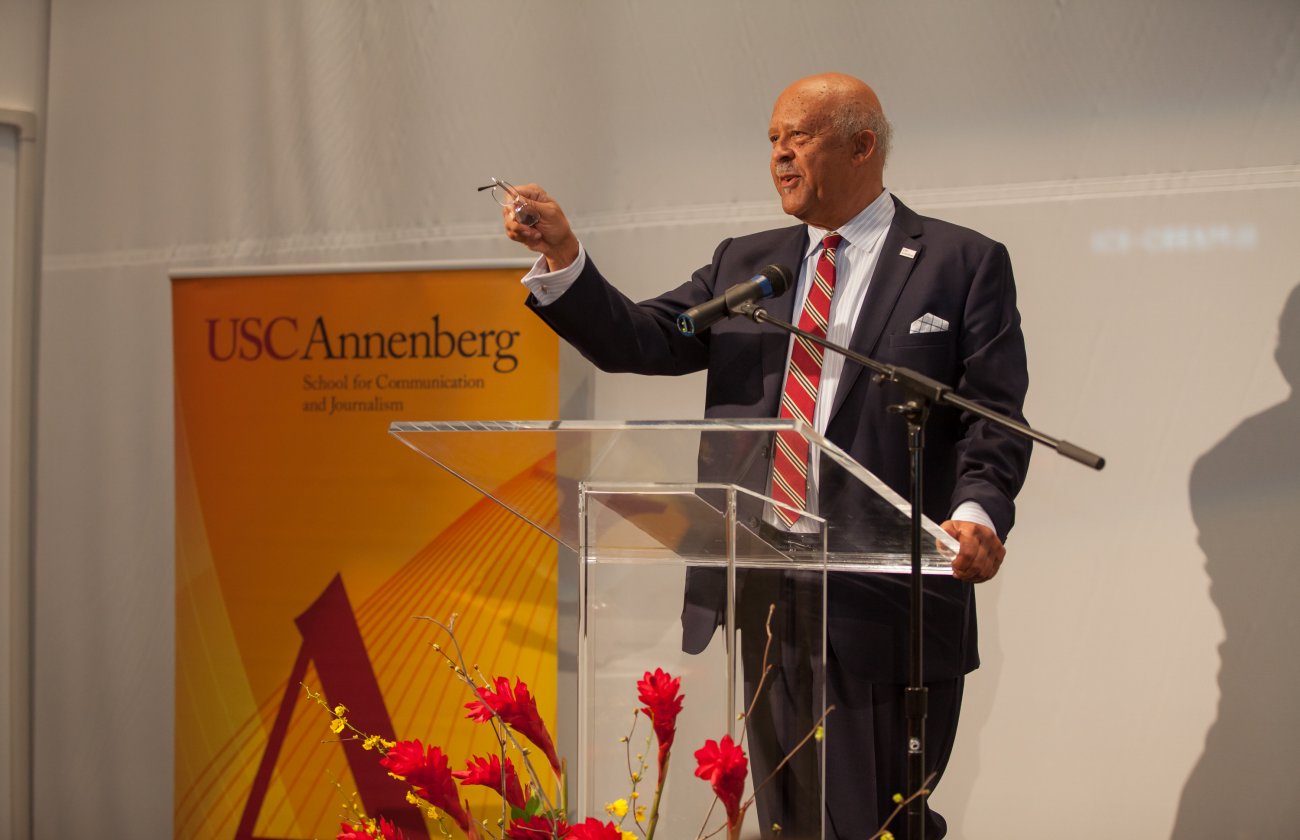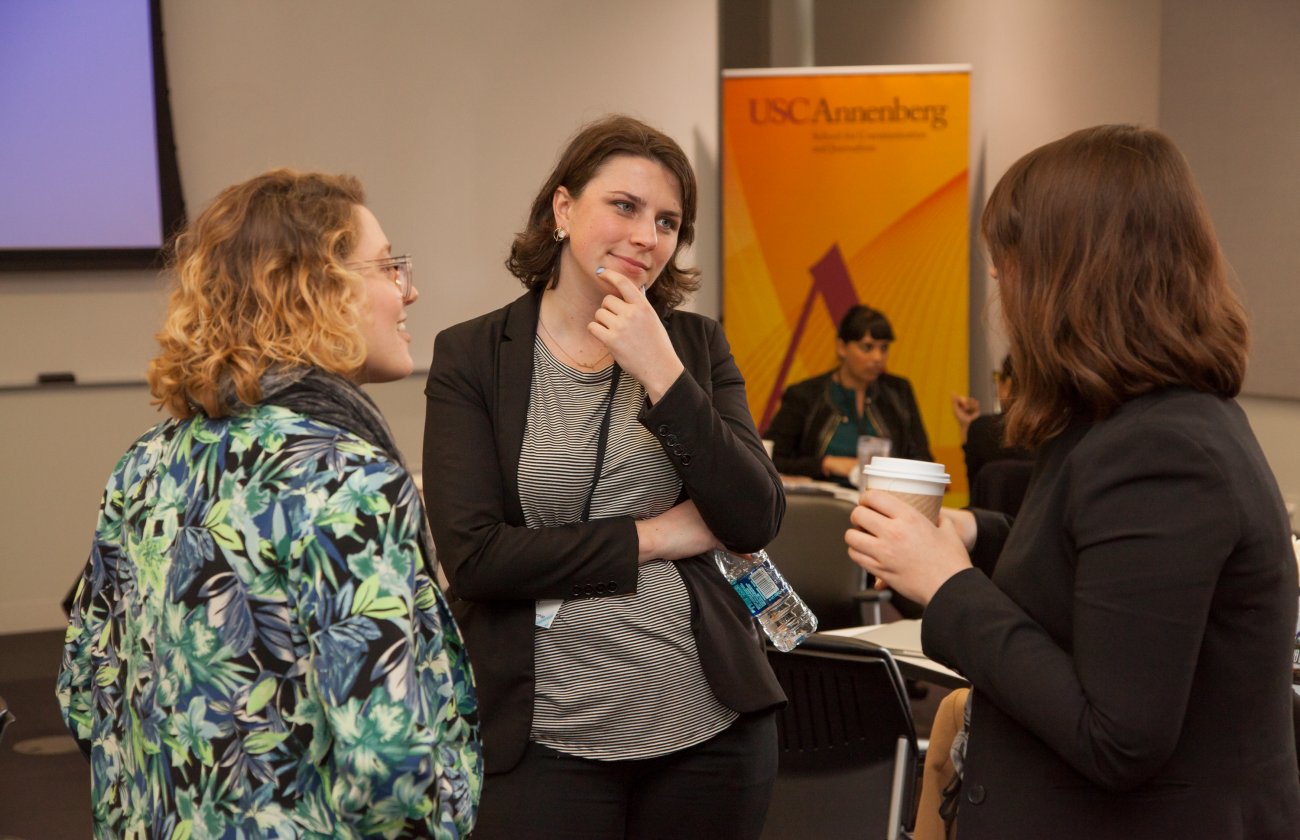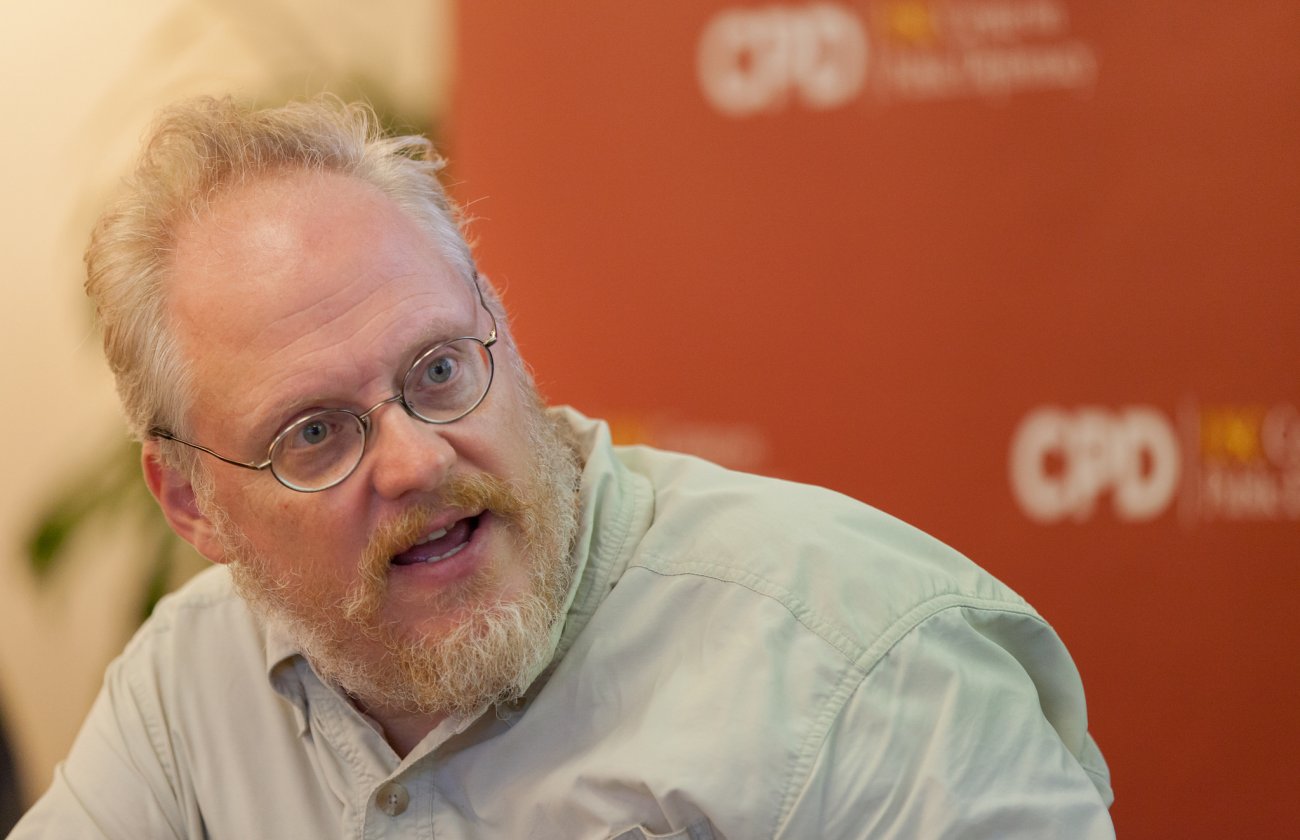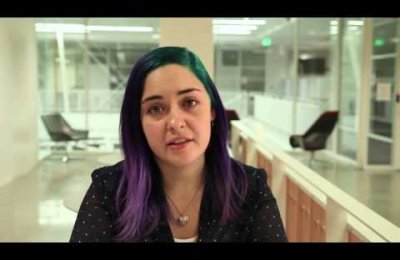On a recent Wednesday mid-day, School of Journalism director Geneva Overholser was ecstatic.
"If the future of America is in hands like these, then we have no reason to be gloomy," said Overholser, who had just witnessed client presentations made by 14 elite USC students to staff members from a pair of Los Angeles area non-profits.
The non-profits are T.R.U.S.T. South LA, a community land trust, and the Asian Pacific American Legal Center, or APALC. The students were from the 2012 USC Mobile News Incubator Fellowship Program, a project generously funded by the Knight Foundation.
Five of the 14 Fellows hailed from USC Annenberg; five more came from the USC Viterbi School of Engineering and four from the USC Marshall School of Business.
During a six-week start-up-style period that concluded with the client presentations, held June 27 at Marshall's Popovich Hall, the students divided into three teams, each featuring at least one student from each school. In addition to their diverse areas of expertise and study, the students ranged in academic chronology from rising sophomore to doctoral candidate.
Throughout the six weeks, in the manner of professional consultants, the Fellows worked out of Viterbi's Kaprielian Hall. They met multiple times with their clients, communicated with outside experts, did their own research and fieldwork, discussed and debated ideas and best practices with one another and then got to work creating business plans, RFPs and mock-ups and prototypes.
The goal of all this effort was to marry the non-profits and the people they serve with useful and original mobile communication products and strategy. Another goal was to promote collaboration between the academy and nearby communities as well as between students and faculty from three schools and many disciplines.
Journalism professor Dana Chinn made it clear this wasn't just a classroom exercise.
"The expectation is to do something innovative and have an impact in the community," said Chinn, a Web analytics expert and the program's project director for the second time in the past three years. (A previous variation of the Incubator brought students together for only two weeks and involved partnerships with media organizations.)
This year, in a packed auditorium, the three teams of Fellows made formal public presentations of their work. Two presentations focused on mobile projects for "feature" – as opposed to "smart" – phones. The latter tend to be app-based and far more expensive. The former, which are focused on phone calls and text messaging, are more economical and have a deeper market penetration in the neighborhoods served by the client non-profits.
"That's what this project is all about – really using mobile technologies to reach and engage in communities using the technology that they are using," Chinn said. "It's truly bridging the digital divide by taking an audience-based approach."
The audience that mattered most during the presentations were afterwards in an enthusiastic mood – a la Overholser.
"I'm extremely happy with what the students presented today," said Mike Pedro, APALC's youth and community coordinator. "I feel really inspired that we could take the project and do something for the community."
Pedro and his colleague Kim Huynh Dam, APALC's parent leadership coordinator, were referring to a presentation titled "Food Storytelling Project.” The team's project manager was Minzhe Wen (M.A., Strategic Public Relations). Wen and her four colleagues – two representing USC Marshall, two representing USC Viterbi – explained how the high schools in the nearby city of Alhambra are equally divided in population between Latinos and people of Asian and East Asian origin.
Wen and company suggested to their clients a mobile tool and website – also useful for live gatherings – that turns interest in cross-cultural cuisine into a way of conducting interviews that break down barriers.
"Food is a point of pride for the city," Wen said. "Storytelling is such a good method for communicating."
Like the other two groups, these students' presentations and their related, longer reports turned into their clients featured detailed budgets, multiple phases for moving forward and metrics to measure success.
The other two projects were with and for T.R.U.S.T. Richelle Gribble, a rising senior majoring in Fine Arts and minoring at USC Marshall in social entrepreneurship and marketing, was the project manager for "Event Promotion." Gribble was so committed to the cause at hand that she remained in Los Angeles working on the project – even as one of her artworks was appearing on the giant LED screens in Times Square.
The project proposed developing a phone and text message tree that would lead to increased participation in the T.R.U.S.T.'s various activities as well as build and capitalize on the non-profits contacts database – all without stressing the small organization's multi-tasking staff. Future proposed phases of the project involve enhanced mobile, an improved website and additions to the non-profit's staff.
The other T.R.U.S.T. group was project managed by recent graduate Chloe Stepney (B.A., Print and Digital Journalism). This group worked on the concept titled "Buy South LA: Database Structure and Survey Tool." Their presentation exhibited a field-tested, proprietary questionnaire for the non-profit to use to survey local businesses. The resulting information would serve multiple purposes the client seeks, including introducing the businesses to the non-profit and increasing awareness of, and bringing new customers to, these mostly small neighborhood businesses.
"T.R.U.S.T. can really use this information for their advocacy and to further the mission of their organization," said Stepney, who interviewed for and was subsequently hired for her first full-time job during the six-week program.
Tafarai Bayne, T.R.U.S.T.'s community affairs manager, said the presentations showcased compelling projects for her team to push forward.
"It's been exciting to be able to have a team of dedicated, passionate and really intelligent folks digging into our work and working with us on the ground to make sure that our vision and our ideas can be manifested in way that are not only immediately implementable, but also just beautiful,” Bayne said.
The Knight grants continue with the beginning of the 2012-2013 school year. Chinn and her colleagues will work with some of the current and likely new Fellows as well in order to see the three projects through.
"The measure of success for this program," Chinn said, "is that the organization actually implements it. And not only is it implemented, but six months from now it is still in operation."
The six-week program wasn't about grades – there were none – and making mistakes and quickly learning from them was a welcome part of the process. The program itself is a USC Annenberg favorite.
"I'm embarrassingly passionate about it," Overholser said. "These things could make a real difference in the lives of these non-profits. It's the heart of our commitment."









